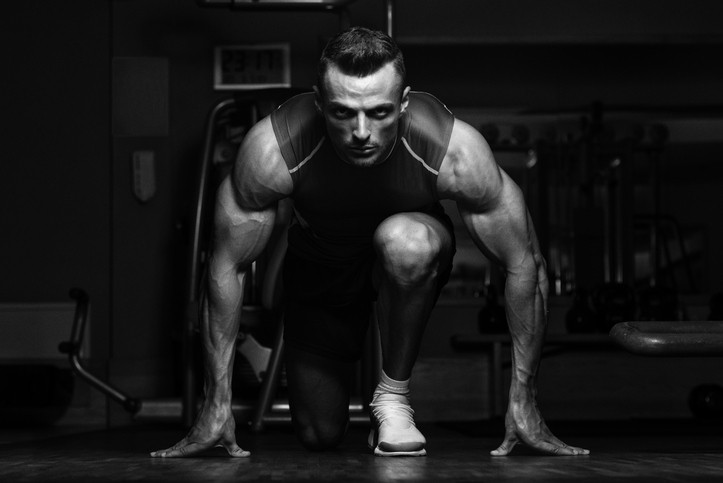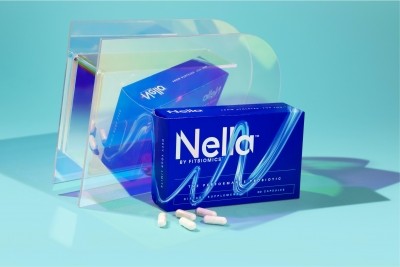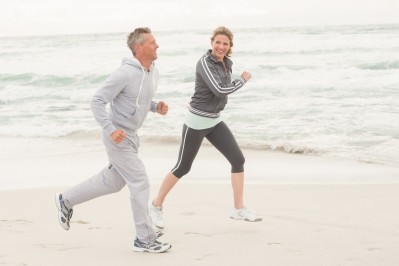Review: Athletes have healthier, more diverse guts, but why that’s true is less clear

The review was published this week in the Journal of the International Society of Sports Nutrition. The list of authors includes a who’s who of recent research done into the interplay between exercise and the gut microbiome.
The authors noted that while the subject is vast, the research within in it is not. The paper includes 242 citations, but the subject cries out for more. “Few studies have focused on the impact that voluntary exercise has on gut microbiota and, to date, all but seven of these experimental studies utilized murine models,” the authors wrote.
Broad brush: Athlete’s guts are more diverse, more active
Nevertheless, some broad brush strokes have become clear, the authors wrote. One of the paper’s authors, Dr Ralf Jäger, PhD, principal of scientific consulting firm and CRO Increnovo, which is based in Milwaukee, WI, had this to say:
“Compared to sedentary people, active individual’s microbiota displays a higher abundance of health-promoting bacterial species and increased diversity. Some studies compare different levels of physical activity, e.g., Estaki et al., 2016, Canada: athletes with low, medium and high cardiorespiratory fitness levels. Those study indicate the more you work out, as indicated by the individuals fitness level, the greater the changes in the gut microbiota. Also, acute exercise in amateur runners has already an effect on the gut microbiota (Zhou et al., 2014).”
Jäger noted that much of the human research into the subject has been done only recently. Starting with a study in Ireland in 2014 done on rugby players, Jäger said 10 studies have looked into gut microbiome makeup among athletes, and seven of those have been published in only the past two years. In addition to the rugby players, subjects have included professional cyclists, elite distance runners and competitive walkers and Olympic rowers. Some of these were done on slightly different endpoints and thus were not included in the seven studies cited above.
The authors said among the features of the ‘health promoting’ microbiome observed in athletes include a greater abundance of certain phyla of organisms compared to sedentary controls and a greater diversity of functional pathways related to tissue repair, and a higher amount of beneficial short chain fatty acids, including butyrate, propionate and acetate. These functional differences at the microbiome level afford the athletes a “greater ability to harness energy from the diet with increased capacity for carbohydrate metabolism, cell structure, and nucleotide biosynthesis.”
“Nearly all studies included in this review have shown positive correlations between gut taxa and exercise. Overall exercise appears to enrich microbiota diversity, stimulate the proliferation of bacteria which can modulate mucosal immunity, improve barrier functions, and functional pathways capable of producing substances (e.g., butyrate and propionate) that can increase performance and health,” the authors added.
The ‘why’ is less clear
How these changes come about is less clear, the authors noted. Most of the research into human gut diversity has noted the vast diversity of human guts, but has shown that the biggest shifts come from what people eat, as opposed to how they’re ‘made.’ How much of the difference observed in the athletic vs sedentary guts comes form the differences in what the two groups ate? Athletes tend to have specific diets, the authors noted, which frequently include higher amounts of protein per unit calorie and higher throughput of energy than do the diets of sedentary individuals.
“[R]esearch on the gut microbiome in athletes must incorporate dietary and supplemental intake otherwise it might be a confounding factor in determining exercise-specific effects on the composition of the microbiome. While individuals’ microbiotas appear to be driven by their primary dietary patterns, future research is needed to better describe the impact of high-protein consumption and (in conjunction) the types and amount of fiber and fats consumed,” the authors concluded.
New research pathway: Finding specific beneficial species
Jäger noted that one of the most exciting aspects of this developing body of research is the quest to find individual new probiotic species that might have specific functional benefits. For example, a study that is too new to have been included in the present review has tested a strain—Lactobacillus salivarius subspecies salicinius (SA-03)— isolated from one weightlifter that boosted muscle strength and endurance in a mouse model.
Jäger noted an earlier study, that was included in the review, found a strain isolated from marathon runners could offer a heightened ability to deal with lactic acid, one of the byproducts of high intensity exercise. That study was led by Jonathan Scheiman, PhD, principal in the firm Fitbiomics.
“Isolating strains from elite athletes is a fascinating and innovative new concept for new strain discovery and functional development. Elite athletes are made through years and years of hard work, in combination with some luck in the gene lottery. Now we are looking into another avenue, were those athletes exposed to unique probiotics strains in their life, and those strains offer a sport specific benefit,” Jäger said.
“Do endurance athletes have more and unique bacteria that are capable of metabolizing lactic acid, and picking the right food containing these bacteria at one point during their lifetime gave them a competitive advantage? Or do endurance athletes have more lactic acid consuming bacteria because they train, train a lot, and when they train, they produce lactic acid, lactic acid is the preferred “food” of those bacteria, they feast on their favorite food and multiply? And that’s why they have more . . . the chicken and egg question.
“Lactic acid is produced in the muscle and probiotics live in the gut. Scheiman et al. 2019, were able to show that lactic acid metabolism in the gut can influence muscular lactic acid levels. That was a crucial and important link to show that this can indeed be physiologically meaningful,” Jäger added.
“The only way to truly answer this question is to take the unique probiotic strains, and supplement leisure and professional athletes with those strain and check if they indeed see an improvement in endurance performance. If they do, we have our answer,” he concluded.
Source: Journal of the International Society of Sports Nutrition
17, Article number: 24 (2020)
The athletic gut microbiota
Authors: Mohr AE, Jäger R, Carpenter KC, et al.
























